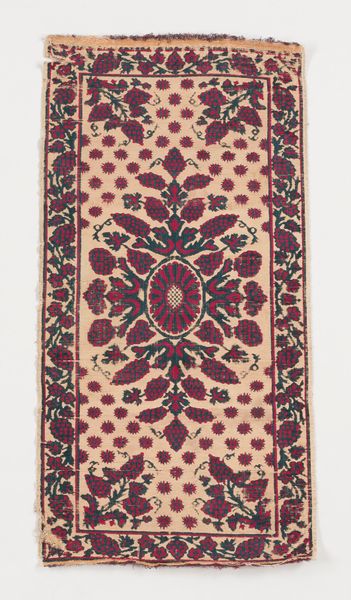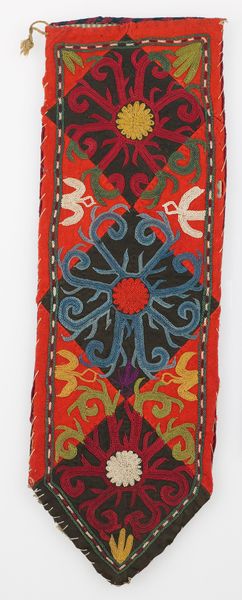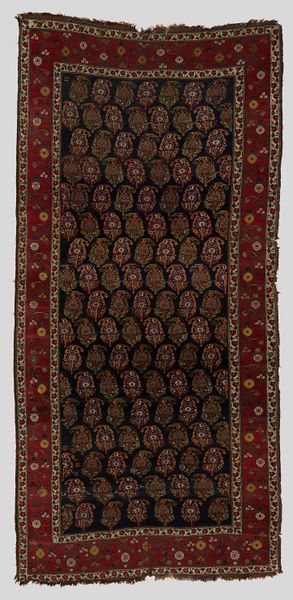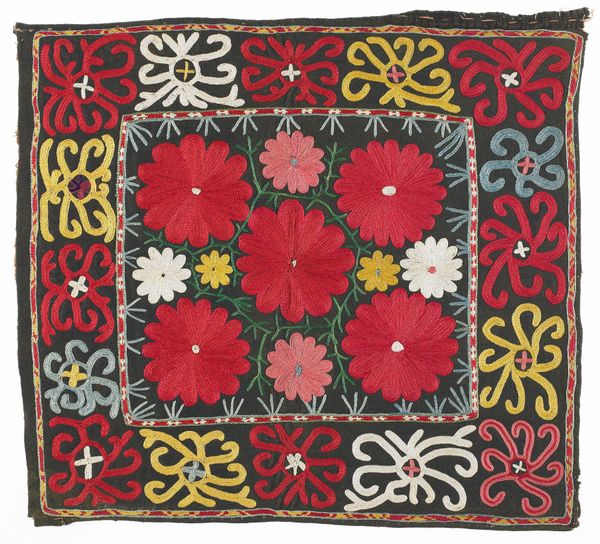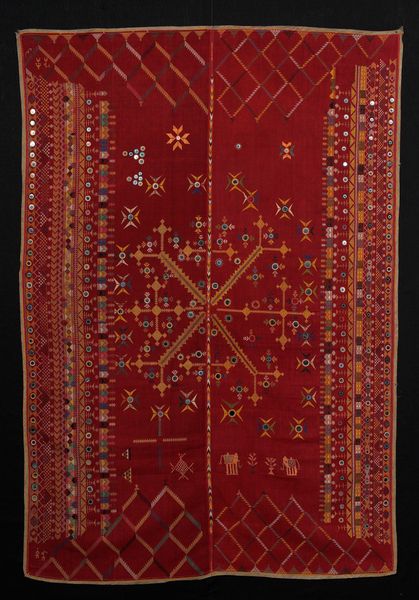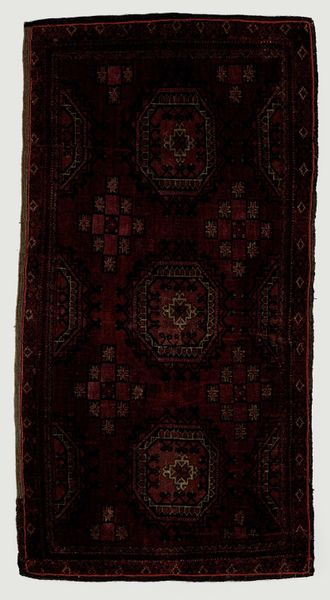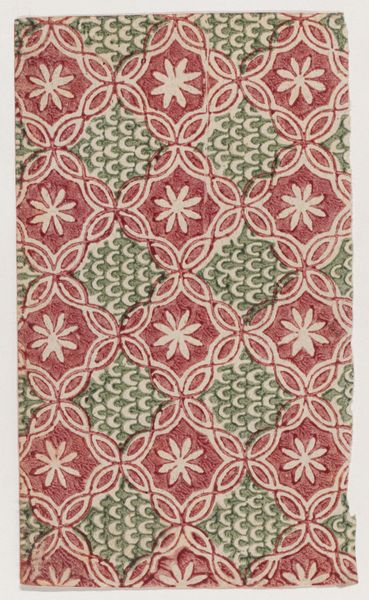
silk, textile, cotton
#
silk
#
asian-art
#
textile
#
geometric pattern
#
geometric
#
cotton
#
islamic-art
#
decorative-art
Dimensions: 33 1/2 x 3 1/2 in. (85.09 x 8.89 cm)
Copyright: Public Domain
Curator: Let's discuss this vibrant 19th-century textile from Mia, titled "Kamarband." It is an eye-catching piece using silk and cotton. Editor: My initial reaction is a feeling of groundedness, almost an earthly stability. The rich, dark blues act as an anchor for the fiery reds that seem to blossom upwards. There’s something quite powerful and assertive about this piece. Curator: Indeed. "Kamarband" literally translates to "waistband," which is what these textiles typically functioned as within Islamic communities across Asia. Think about the power dynamics inherent in clothing, especially in ritual or ceremonial settings. A waistband like this signified status, and perhaps also religious piety. Editor: Absolutely. We must examine the agency of dress and presentation and the power relationships imbued in those garments. Did wearing such a piece dictate behavior, and how does this comport with issues of access and privilege across gender and race in that community? Curator: Good questions to consider, particularly since we don’t know who originally wore this "Kamarband." What we do know is that these textiles played significant social and political roles in shaping identities. This waistband probably denoted something specific: a rank, profession, geographic origin, and family affiliation. It became a portable signifier, worn across generations in particular Islamic communities. Editor: It strikes me that such decorative textiles might, in many Western cultures, be dismissed as ‘craft’ and thus relegated to a lesser artistic position, when their role in cultural representation makes them intensely significant artistic statements. We need to examine the Western-centric views and inherent bias present in canonical notions of Art and Art history. Curator: Precisely! That highlights the ongoing importance of recognizing the value of textile production, particularly when we are contextualizing works from different eras. It brings into focus labor inequities and how certain forms of artistry are viewed based on the communities that originate them. This isn't just a decorative piece. It is an intricate historical document in fabric form. Editor: It's remarkable to consider how a single object can unlock layers of understanding about a society—its aesthetics, its hierarchies, and even its suppressed narratives. The vibrant dialogue woven into this “Kamarband” keeps resonating. Curator: I couldn't agree more. Looking closely reminds us of the power that lies in art's ability to tell these layered and nuanced stories.
Comments
No comments
Be the first to comment and join the conversation on the ultimate creative platform.



